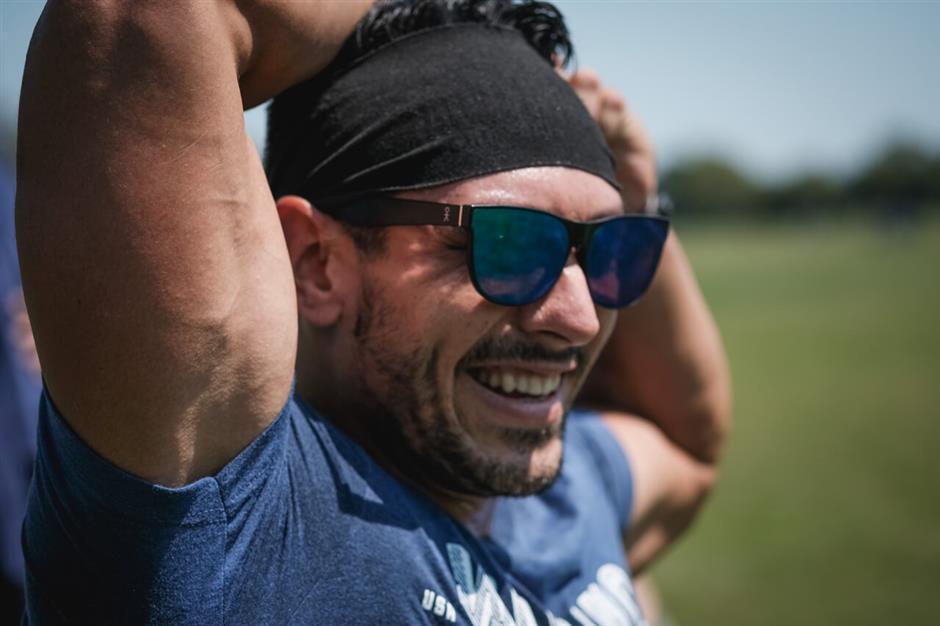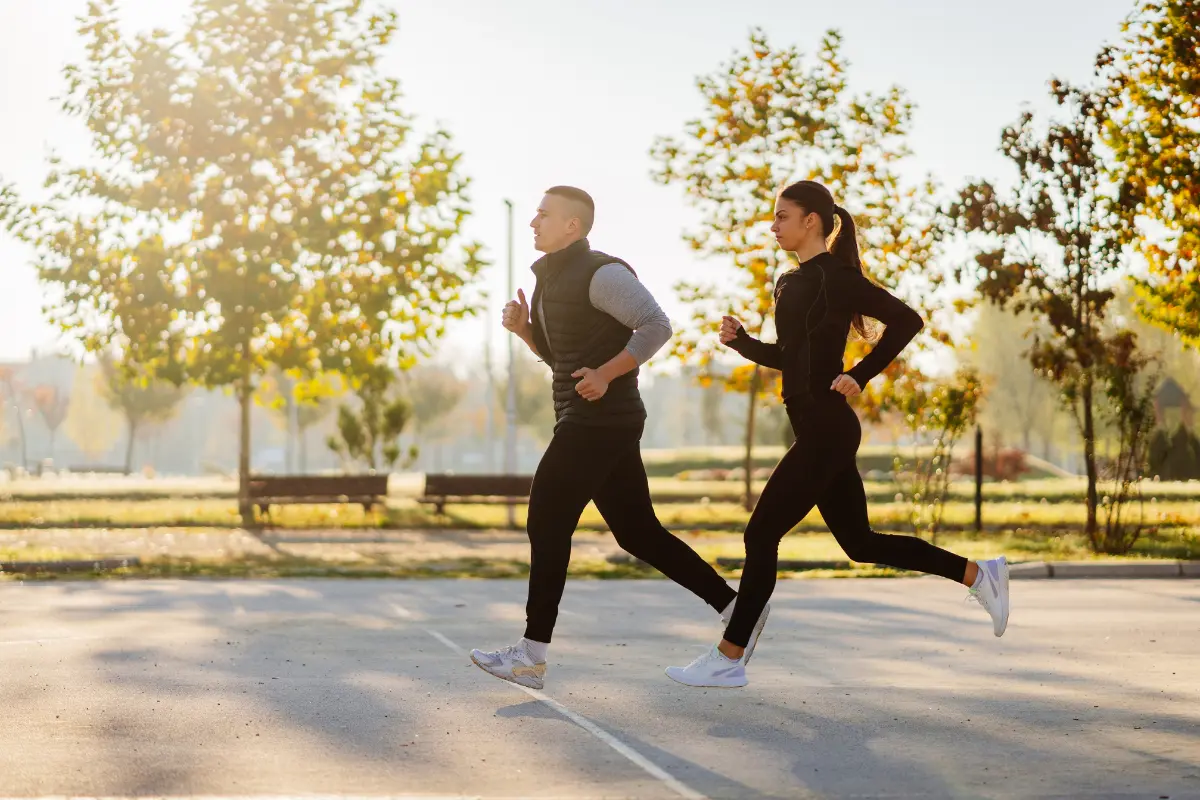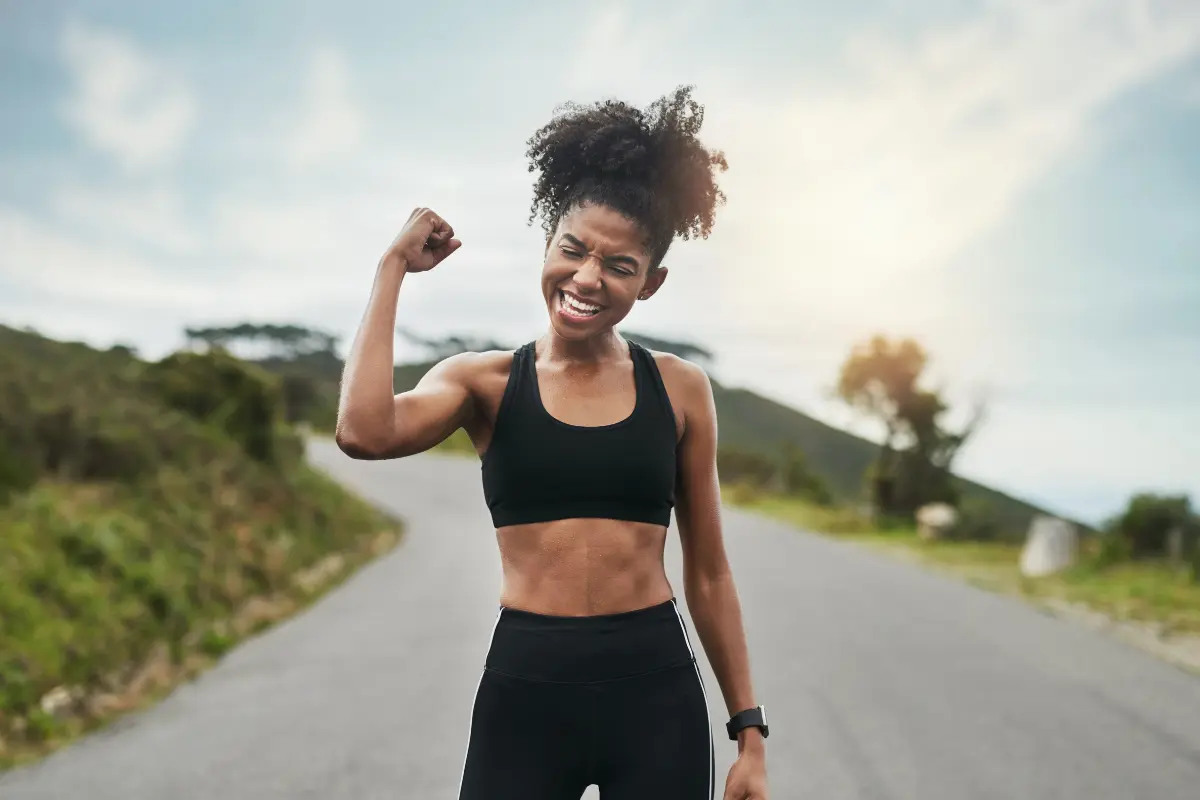
There are many fun activities throughout the summer, including biking, hiking, swimming, outdoor HIITT classes, climbing, tennis, and the newly popular pickleball.
While exercising outside has great benefits, it does not come without challenges. Exercising in hot weather can pose risks ranging from dehydration to heat stroke. Staying hydrated throughout the summer and training outside will help prevent common symptoms and side effects, including cramps, dizziness, and exhaustion.
Understanding the effects of heat on exercise and hydration strategies is important so you can train safely all summer long!

Understanding the Effects of Heat on Exercise
Heat affects the body’s ability to regulate temperature by competing with metabolic and thermoregulatory demands. During exercise, your core temperature rapidly increases along with your metabolic rate. The process of thermoregulating through sweating and changes to skin blood flow must match the rate of heat production to reach a state of equilibrium. Therefore, heat impacts your ability to achieve maximum metabolic rate during exercise.
Advertisement
Common heat-related illnesses include heat exhaustion and heat stroke. It is important to recognize the symptoms of these illnesses from onset.
Common symptoms of dehydration include:
- Dizziness
- Fatigue
- Weakness
- Confusion
- Elevated heart rate
- Fast breathing
- Headaches
- Nausea
If you recognize these heat-induced symptoms at their onset, you can take preventative measures to avoid extreme heat exhaustion or the potential of heat stroke. Your hydration status impacts the effectiveness of your body’s thermoregulatory system. Therefore, hydration strategies are the most helpful tools for regulating body temperature and staying safe.
Hydration Strategies for Working Out in the Heat
Your hydration status significantly impacts your body’s ability to regulate your internal temperature while exercising in the heat and keep you safe. One of the biggest challenges of working out in the heat is the risk of dehydration. On average, people sweat 1 liter per hour when exercising in the heat.
Dehydration from sweat loss can increase plasma toxicity and decrease blood volume, resulting in a higher internal temperature due to the body's inability to effectively remove heat. Therefore, hydration should be the priority before, during, and after exercising in the heat.
Advertisement
A general recommendation for fluid intake is to consume half of your body weight in ounces of water. From there, it is important to factor in your sweat rate, which can be done by weighing yourself before and after exercise to see how much you are losing and, therefore, know how much to replenish.
It is important to note that exercising in the heat can increase your sweat rate by 10-20%. Your sweat rate is proportional to your metabolic rate. Therefore, sweat loss in the heat can amount to as much as 3-4 liters.
When prioritizing hydration status, consider more than liquid intake. Electrolyte replenishment is an important part of hydration balance. When you drink water without replacing electrolytes, you alter the concentration of electrolytes in the blood and often dilute sodium. Adding an electrolyte packet to your water is a simple way to restore the balance of essential minerals lost during exercise in the heat. Our favorite electrolyte packets are available here at DrinkLMNT.
Other great sources of electrolytes include:
- Coconut water
- Maple water
- Fresh fruits
- Other electrolyte packets: Redmond Re-Lyte and Liquid I.V.
Advertisement
Time and Location Considerations for Hot Workouts
Time and location are important considerations for staying safe while working out in the heat. Choosing optimal times for outdoor workouts will allow you to get all of the benefits of being outside while avoiding the hottest parts of the day.
On most summer days, the hottest temperatures occur between 3 p.m. and 6 p.m. Therefore, a morning workout is optimal for outdoor activities throughout the summer months.
Exercising in shaded areas, indoor gym spaces, and arenas during peak heat hours is a great alternative. Explore your local parks for shaded options and trails to meet your activity needs. Check out your local YMCA, Lifetime Fitness, or VASA options for indoor courts, cycling, and pools.
If you do not have an indoor or shaded option to meet your training needs, you can adjust the intensity of your workout. Reducing your workout intensity is a good modification to keep you training through high temperatures. You may also choose to reduce the duration of training if you are training during peak heat.
Advertisement
The Best Things to Wear for Hot Workouts
Dressing appropriately for the heat will keep your body sweating and cool your core body temperature. Wear lightweight, breathable clothing for optimal sweat evaporation.
Look for garments with:
- Mesh construction under the arms and back
- Seamless construction
- UV-protective materials
- Moisture wicking fabrics
Wear hats and sunglasses for further sun protection. Look for tight-fit options and rubber grips that will stay in place while training.
Pre-Workout Preparation for Outdoor Workouts
A proper warm-up for training in the heat will help your body gradually acclimate to the high temperatures. Dynamic warm-ups at a low intensity are a good option to begin movement slowly.
Advertisement
Dynamic movements include:
- Lunges
- Squats
- Bear crawls
- Push-ups
- Bird dogs
- Etc.
Hydrating throughout your warm-up is also important during high temperatures.
Outdoor workouts also call for proper sun preparation with sunscreen. The best practice is to apply sunscreen 30 minutes before going outside to train and reapply every 2 hours. If you are sweating a lot during your session or swimming, you will want to apply more frequently. This is why dressing appropriately and utilizing hats during longer workouts is beneficial, especially if you do not have time to reapply sunscreen every 1-2 hours.
Sunscreen options for healthy living:
Insect repellent may be another consideration when working out in particularly humid or damp climates. You can make your own insect repellent using essential oils.
Advertisement
Essential oils with insect-repellent properties:
- Rosemary
- Lavender
- Sage
- Thyme
- Peppermint
Your pre-workout routine should include a balanced meal or snack. For your pre-workout meal, it is best practice to prioritize protein and carbohydrates, particularly carbohydrates, within an hour of training. Raw foods, especially fruits and 100% fruit juices, are hydrating sources of carbohydrates, preparing you for losing electrolytes in the heat. Aim to limit fiber and fats so your body can prioritize the digestion of carbohydrates as your primary fuel source.
Low fiber fruits:
- Ripe banana
- Cantaloupe
- Watermelon
- Honeydew melon
- Nectarines
- Papayas
- Peaches
Cooling Strategies During Exercise
Additional accessories can help cool you down as you train. Cooling accessories include towels, portable or misting fans, and ice packs. These can be used as needed to help lower body temperature during or after training in the heat.
Advertisement
You may also need to take additional rest or move into the shade. Breaks are a great opportunity to rehydrate. Sipping water with electrolytes or coconut water will help maintain hydration during exercise. Breaks can also be a time to use your cooling accessories, such as grabbing a cold cloth or ice pack from a cooler that you keep next to you while training.
Post-Workout Recovery
Post-workout should include a proper cool-down by keeping your body moving at a much lower intensity. Walking or biking at a talking pace works well for cooling the body down post-workout.
During and immediately after cool-down movements, you will want to begin replenishing the body of lost fluids and electrolytes. Slowly sipping electrolyte drinks works better than chugging water. This is another great time to consume raw fruits that are low in fiber for additional carbohydrates and natural electrolytes.
If you feel any signs of heat exhaustion after your workout, such as dizziness, nausea, or extreme fatigue, monitor your signs and seek medical attention if symptoms persist.
Advertisement
The TLDR on Safely Working Out in the Heat
Outdoor activities are a great way to keep moving this summer! When exercising in the heat, prioritize your safety through hydration strategies, proper warm-ups, and cool-downs.
Top tips for exercising in the heat:
- Avoid peak-heat times of the day
- Wear protective gear with sweat-wicking features
- Hydrate before, during, and after training
- Include electrolytes and hydrating foods in your pre and post-workout meals or snacks
- Warm up and cool down properly
- Take breaks when needed
Understanding the signs and symptoms of heat stress and taking proactive measures to stay cool and safe will optimize your training and vitality this year!
If you need support planning and optimizing workouts in hotter conditions and climates, a WAG coach can help you determine exactly how to prep and recover to optimize your training and recovery. Learn more about working with a 1-on-1 nutrition coach here.
Advertisement
References:
- Institute of Medicine (US) Committee on Military Nutrition Research; Marriott BM, editor. Nutritional Needs in Hot Environments: Applications for Military Personnel in Field Operations. Washington (DC): National Academies Press (US); 1993. 3, Physiological Responses to Exercise in the Heat. Available from: https://www.ncbi.nlm.nih.gov/books/NBK236240/
- Institute of Medicine (US) Committee on Military Nutrition Research; Marriott BM, editor. Nutritional Needs in Hot Environments: Applications for Military Personnel in Field Operations. Washington (DC): National Academies Press (US); 1993. 5, Water Requirements During Exercise in the Heat. Available from: https://www.ncbi.nlm.nih.gov/books/NBK236237/
Rachel Holcomb
Get a WAG Coach
Working Against Gravity has led the macro tracking and health space for over a decade. Our team doesn’t just understand the science of nutrition—we’ve spent years mastering the art of tailoring it to fit your life. That means no cookie-cutter plans, just real strategies that have worked for over 30,000 people.
Choose from our membership options and start working with an expert 1-on-1 coach today.



